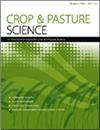壳聚糖和农作物秸秆碳氮矿化对酸性多效土酸度的改善作用
IF 1.9
4区 农林科学
Q2 AGRICULTURE, MULTIDISCIPLINARY
引用次数: 1
摘要
本文章由计算机程序翻译,如有差异,请以英文原文为准。
Role of carbon and nitrogen mineralisation of chitosan and crop straws in ameliorating acidity of acidic Ultisols
ABSTRACT Context. Carbon (C) and nitrogen (N) transformation processes in soils play an important role in the fluctuation of soil pH. Incorporation of chitosan and crop straws, byproducts from fishery and agriculture, into acidic soils can increase soil pH through decarboxylation, decomposition, N immobilisation and ammonification. Aims. The study was designed to evaluate the transformation of organic N and C from chitosan and/or crop straws and their effects on soil physicochemical properties. Methods. Chitosan, rice straw and maize straw were incubated with two acidic Ultisols from Langxi (Soil 1) and Yingtan (Soil 2) differing in initial pH. Six treatments were prepared in triplicate: control (no amendment), 4% chitosan, 4% rice straw, 4% maize straw, 2% chitosan + 2% rice straw, and 2% chitosan + 2% maize straw. Soil pH, N transformation and CO2 evolution were estimated at different time intervals. Key results. After 40 days of incubation, control soil pH decreased by 0.35 and 0.32 units for Soils 1 and 2, respectively. Rice straw, maize straw, chitosan, rice straw–chitosan and maize straw–chitosan significantly increased soil pH by 0.51, 0.17, 2.27, 1.78 and 2.02 units for Soil 1, and 0.71, 0.16, 0.67, 0.49 and 0.68 units for Soil 2 (P < 0.01). The respective treatments decreased exchangeable acidity by 62%, 51%, 95%, 95% and 95% for Soil 1 and 75%, 69%, 88%, 88% and 87% for Soil 2. In treatments containing chitosan, the pH increase resulted from ammonification of organic N and mineralisation of organic C, with the effect higher in Soil 1 than Soil 2. Conclusions. Amending acidic soils with chitosan and crop residues can effectively increase soil pH and slow soil acidification rate. Implications. This study provides useful information for amelioration of acidic soils.
求助全文
通过发布文献求助,成功后即可免费获取论文全文。
去求助
来源期刊

Crop & Pasture Science
AGRICULTURE, MULTIDISCIPLINARY-
CiteScore
4.20
自引率
15.80%
发文量
111
审稿时长
3 months
期刊介绍:
Crop and Pasture Science (formerly known as Australian Journal of Agricultural Research) is an international journal publishing outcomes of strategic research in crop and pasture sciences and the sustainability of farming systems. The primary focus is broad-scale cereals, grain legumes, oilseeds and pastures. Articles are encouraged that advance understanding in plant-based agricultural systems through the use of well-defined and original aims designed to test a hypothesis, innovative and rigorous experimental design, and strong interpretation. The journal embraces experimental approaches from molecular level to whole systems, and the research must present novel findings and progress the science of agriculture.
Crop and Pasture Science is read by agricultural scientists and plant biologists, industry, administrators, policy-makers, and others with an interest in the challenges and opportunities facing world agricultural production.
Crop and Pasture Science is published with the endorsement of the Commonwealth Scientific and Industrial Research Organisation (CSIRO) and the Australian Academy of Science.
 求助内容:
求助内容: 应助结果提醒方式:
应助结果提醒方式:


